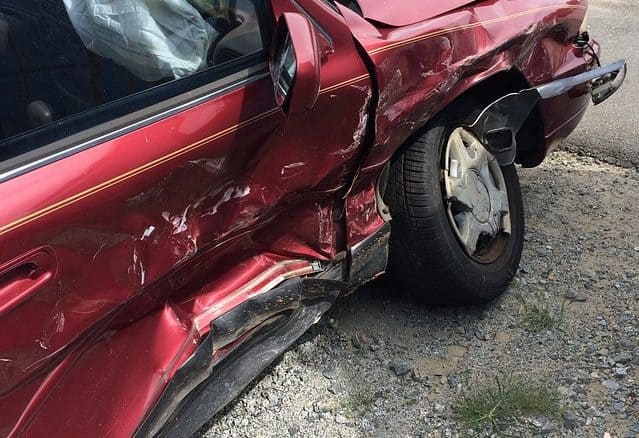This article aims to educate readers about road accident laws in the United States. Further, a brief overview of the road accident laws of several states in the United States is discussed.
It has been published by Rachit Garg.
Table of Contents
Introduction
If you’re in the United States and you’re thinking of getting your driver’s license, there are a few things you should be aware of, particularly about the country’s road laws. You may know about road laws. But have you considered learning about road accident laws so that, in case you get involved in a road accident, you know exactly how the law is going to work?
In the United States, a road accident law can be defined as legally binding rules that determine who’s responsible for injuries, deaths, and property damage caused by a traffic collision. Road accidents are not limited to one mode of transportation and thus include car, train, truck, and bus accidents, as well as any other type of public transportation mishap.
It’s important to note that these road laws differ slightly from state to state. For example, the road accident laws in California differ slightly from those in Florida.
Some important general descriptions related to road accidents in the United States
The Manual On Classification Of Motor Vehicle Traffic Accidents, Seventh Edition, has encompassed several definitions related to road accidents in its manual. Some of the most significant are as follows:
Accident
An accident has been said to be an unsteady event, including at least one incident that is or was harmful.
Traffic accident
A traffic accident is a type of road vehicle accident where:
- The unsteady event takes place on a traffic way, or
- A deleterious event occurs on a traffic way.
Injury accident
An injury accident can be said to be any accident that causes one or more injuries.
Non-injury accident
Any road vehicle accident other than a vehicle accident is considered a non-injury one. A non-injury accident is also regarded as a property damage-only accident.
What to do in road accidents in the United States
To help with your understanding of road accident laws in the US, below is a brief overview of the road laws in the United States you should be aware of.
Steps to follow when involved in a road accident
Show responsibility
In case you get involved in a car accident, it’s important to produce proof so you don’t walk away with a negligent driving case. So, to get acquitted, any victim of a road accident in the US should at least prove four basic elements. Duty, breach, causation, and harm are the four elements.
Drivers and operators of road machinery are required to operate their vehicles and machines in a reasonable manner, which includes driving at a safe speed guided by traffic signs, maintaining good vehicle control, practising defensive driving, and observing traffic signals, among other things. The other issue is making sure to drive while sober, as drunk driving accidents in the US have been on the rise.
Provide evidence
The existence of a duty or license in the event of a road accident is accepted without much supplement, but the litigant must provide direct evidence that the defendant breached the duty. This can be done through eyewitness testimony, surveillance videos, or accepting responsibility. Circumstantial evidence, such as emergency braking tire marks, alcohol readings, or damage smears, may also be used by the litigant.
Get a medical report ready
Furthermore, the plaintiff must establish causation because the court will not assume that the evidence provided on the breach of duty is related to the litigant’s injuries. In car accidents, the element of causation is satisfied by medical reports stating that the injuries are consistent with the collision and that they did not exist before the collision.
Finally, if you’re the litigant, you must demonstrate harm done to you or your vehicle. In the United States, no litigant can file a negligence lawsuit unless damages to the litigant’s vehicle and person are produced. You should be aware that once the harm is proven, the litigant may be entitled to compensation, medical expenses, and other benefits.
What to do when you get involved in an accident
When you’ve just been involved in a traffic accident, normally, you might not have any idea of what step to take next. But here are some tips to take note of:
Stay calm
Following an accident, the first step is to remain silent and allow the responsible authority (police) to do their job. Acceptance of fault is one of the mistakes that many litigants make. Although the court does not accept hearsay or out-of-court statements as evidence, there is an exception, and a small admission can be used against you.
Collect information
It’s prudent to take notes on the other driver’s statements. Record voice memos using smartphones or other electronic devices. In any case, you should gather as much information as possible during the chaos of a road collision. Also, consider taking down the other driver’s information, including name, contact information, license number, vehicle nameplate, and insurance information, if possible.
Also, take note of eyewitnesses’ contact information, the road and traffic descriptions, and the weather condition. Consider taking videos of the accident scene from close range and from a distance to make it easier.
Seek medical attention
Even if you feel fine right after a car accident, you should never underestimate the importance of seeking medical attention immediately. As a potential litigant in a negligence case, you may not want the opposing party’s lawyer to downplay the severity of your injuries while clinging to the fact that you saw it as unnecessary to seek medical attention. So, consider keeping the medical reports safe for use in court.
Road accidents in the United States : a state-wise description
If an individual gets involved in any road accident, it is pertinent for them to know the state laws, which can have a huge impact on the case. So, below are some state-wise essential descriptions of several states in the United States:
California
According to California Vehicle Code Section 20008, a driver or his representative who is involved in a car accident and suffers injuries or the death of an infidel must prepare a written report and submit it to the California Highway Patrol or the police department of the city where the accident occurred. Further, in several circumstances, it is pertinent to report the incident to the DMV (Department of Motor Vehicles) within 10 days.
Alaska
According to Alaska Statutes Section 09.10.070 (2021), any individual injured in an accident in which both parties were involved follows a “pure comparative fault” rule. Here, the entire dollar amount of the plaintiff’s damages and the percentage of fault belonging to each party are calculated.
Illinois
Even in Illinois, just like Alaska, any individual injured in an accident will have 2 years from the date of the incident, under 735 Illinois Compiled Statutes Section 5/13-202. However, under 735 ILCS 13-205, a suit can be filed within five years of the date of the incident if it is only for claiming damages or replacing any damaged property. Moreover, if both parties are responsible for the accident, the rule of “comparative fault” is followed. Here, the jury calculates two things based on the evidence: the total dollar amount of the plaintiff’s damages and the percentage of fault that belongs to each party. So, under this rule, the damages caused by the plaintiff are lowered by a percentage equal to his or her share of fault; however, if it occurs that the plaintiff’s fault is greater than 50%, no damages can be recovered as such.
Mississippi
Under Mississippi Code Section 15-1-49, a lawsuit claiming any remedy for injury or harm caused in the accident can be filed within a span of three years from the date of the incident. Further, it follows the rule of “pure comparative negligence,” meaning damages can be awarded. Still, the award will be lessened in accordance with the share of negligence on the part of the party claiming recovery of such damage.
Texas
According to Texas Transportation Code Section 550.026, if an individual is injured or killed, or if the vehicle is damaged to the point where it cannot be safely driven away from the scene of the accident, the driver of any vehicle involved in the accident must immediately report the accident. Further, the lawsuit for the recovery of such damages can be filed within a span of two years. Moreover, Texas follows the rule of “modified comparative fault,” which is quite similar to “pure comparative fault”, it is discussed in detail above.
Conclusion
If you’re involved in a vehicle accident, you must follow legal procedures to receive the compensation you are entitled to. You must also understand how insurance companies operate because some may limit the compensation available. Also, it is necessary that you are well aware of the state-specific laws in case such a mishap occurs. This guide has hopefully helped you know how to navigate the law when involved in a traffic accident.
Students of Lawsikho courses regularly produce writing assignments and work on practical exercises as a part of their coursework and develop themselves in real-life practical skills.
LawSikho has created a telegram group for exchanging legal knowledge, referrals, and various opportunities. You can click on this link and join:
Follow us on Instagram and subscribe to our YouTube channel for more amazing legal content.
 Serato DJ Crack 2025Serato DJ PRO Crack
Serato DJ Crack 2025Serato DJ PRO Crack











 Allow notifications
Allow notifications



